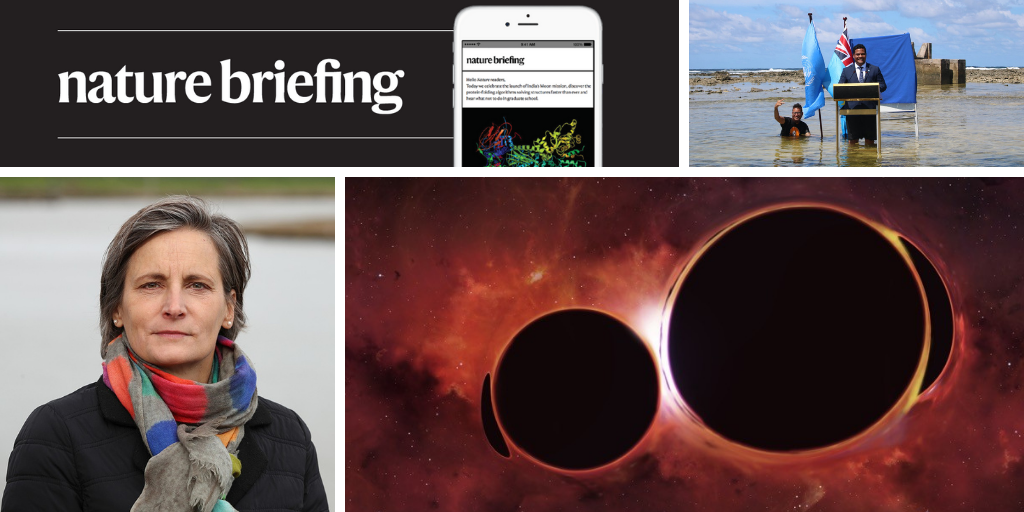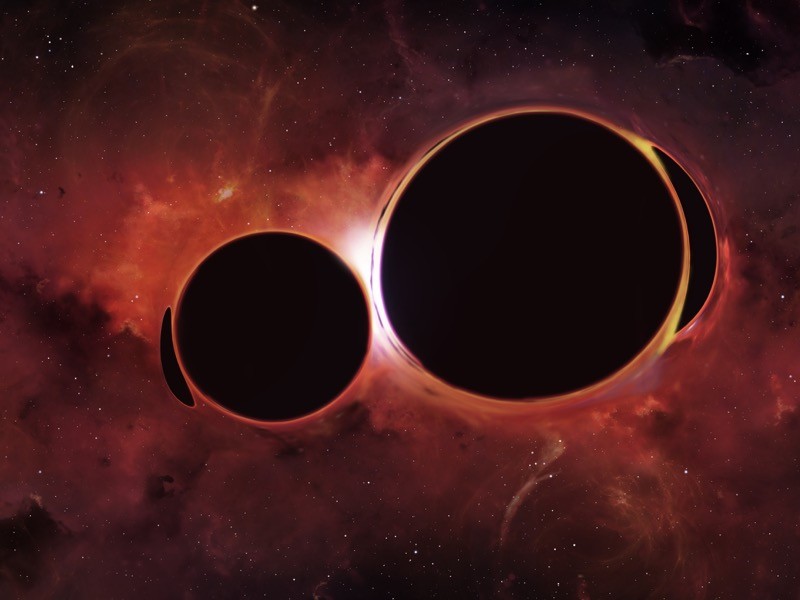Hello Nature readers, would you like to get this Briefing in your inbox free every day? Sign up here.
Gravitational-wave observatories have released their latest catalogue of cosmic collisions, including one featuring the lightest neutron star ever detected in this way, as well as two clashes involving surprisingly large black holes. The detections come from the LIGO and Virgo observatories in the United States and Italy, respectively, which made the landmark first detection of gravitational waves in 2015.
Hundreds of junk-science papers have been retracted from reputable journals after fraudsters used ‘special issues’ to manipulate the publication process. The poor-quality papers — sometimes consisting of complete gibberish — were snuck in by scammers who impersonated scientists and offered to guest-edit special issues of the journals they targeted. Elsevier is withdrawing 165 articles currently in press and plans to retract 300 more, and Springer Nature is retracting 62 articles published in a special issue of one journal. There could be many more retractions to come.
(Nature, and this Briefing, is editorially independent of its publisher, Springer Nature.)
The COVID-19 pandemic has seriously dented the productivity and mental health of researchers, according to two studies that surveyed scientists in Europe and the United States. But the full effects could take years to be felt across academia, and researchers studying the problem warn that measures are urgently needed to support the scientists most acutely affected by disruptions, especially women, parents of young children and people of colour. “The worst may be yet to come,” says network-science researcher Dashun Wang, who led a study that involved 2 polls of a total of nearly 7,000 principal investigators, conducted 9 months apart.
References: Nature Communications paper & Supporting Staff Wellbeing in Higher Education report.
Features & opinion
Amid all the soul-searching over the controversial US approval of the Alzheimer’s drug aducanumab, something has been largely missing, argues pharmaceutical-policy researcher Jonathan Darrow: a clear description of benefits. Experts know “that most new drugs offer only modest incremental benefit over drugs already available”, he writes. “Drug labelling should clearly state what effectiveness was demonstrated and how. … Radical transparency would favour drugs that work best over those approved despite only marginal benefits.”
Organic chemist and self-proclaimed “fluorescent dye nerd” Luke Lavis designs colourful, glowing molecules that help researchers to visualize cellular activity. In 2015, he and his colleagues decided to share their dyes with researchers at no cost and no authorship requirements — just a request to cite their paper, and pay for shipping if they could. Over the past 4 years, they have sent some 12,000 aliquots to more than 500 labs in 32 countries. Making dyes available to researchers has led to some out-of-the-box experiments, from developing ways to ‘timestamp’ biological processes as they unfold, to building new types of sensor, says Lavis. “Giving researchers the opportunity to exercise their creativity unfettered is one of the best ways to push science forward.”








More News
Fusion of deterministically generated photonic graph states – Nature
How I fled bombed Aleppo to continue my career in science
Powerful ‘nanopore’ DNA sequencing method tackles proteins too